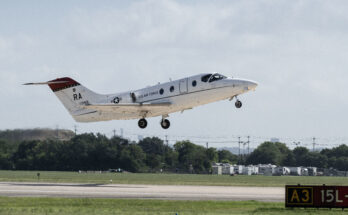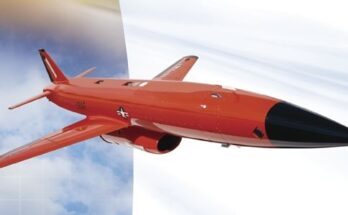The U.S. Department of Defense’s official nomenclature equipment identification system is formally known as the Joint Electronics Type Designation System (JETDS), although it is more commonly called the “AN” designation system, referring to the days when AN stood for “Army/Navy.”
The first three letters following the “AN/” usually indicate:
- The platform on which the equipment is installed
- What type of equipment it is
- The function, purpose, or application of the equipment
The (V) sometimes placed after a designation means that there are variable configurations or models of that particular system, such as the AN/SSQ-53B(V) and AN/SSQ-53F(V). The various configurations would usually be listed as A, B, C, and so forth. An (X) usually indicates that the system is in initial development. A number in parenthesis following the designation, such as AN/SSQ-53F(1), indicates the number of variants of that particular configuration for that specific series or family of equipment.
Note: Forecast International’s Military Electronic Systems products generally do not use the AN/ prefix in equipment designations because it confuses alphabetical listings, and because some of our products are sold electronically, in which case the prefix could complicate the word search capability.
First Letter – Installation/Platform/Environment:
A = Piloted Aircraft
B = Underwater Mobile/Submarine
C = Cryptographic
D = Pilotless Aircraft/Carrier
F = Fixed Ground
G = General Ground Use
K = Amphibious
M = Mobile (Ground)
P = Portable
S = Water
T = Transportable (Ground)
U = General Utility (Multiple)
V = Vehicular (Ground)
W = Water Surface and Underwater Combined
Z = Piloted-Pilotless Airborne Vehicles Combined
Second Letter – Type of Equipment:
A = Invisible Light, Heat Radiation
B = Communications Security
C = Carrier – Electronic Wave/Signal
D = Radiac
E = Laser
F = Fiber Optics
G = Telegraph/Teletype
I = Interphone and Public Access
J = Electromechanical or Inertial Wire Covered
K = Telemetering
L = Countermeasures
M = Meteorological
N = Sound in Air
P = Radar
Q = Sonar/Underwater Sound
R = Radio
S = Special or Combination
T = Telephone (Wire)
V = Visual/Visible Light
W = Armament (peculiar to armament not otherwise covered)
X = Facsimile to Television
Y = Data Processing or Computer
Z = Communications
Third Letter – Purpose/Function/Application:
A = Auxiliary Assembly
B = Bombing
C = Communications Receiving/Transmitting
D = Direction Finder/Reconnaissance/Surveillance
E = Ejection and/or Release
G = Fire Control or Search Light Directing
H = Recording/Reproducing
K = Computing
M = Maintenance/Test Assemblies
N = Navigational Aids
Q = Special or Combination
R – Receiving/Passive Detecting
S = Detecting/Range and Bearing Search
T = Transmitting
W = Automatic Flight or Remote Control
X = Identification and Recognition
Y = Surveillance (Search, Detect, and Multiple Target Tracking) and Control (Fire and Air Control)
X = Secure
EXAMPLE: AN/SSQ-53F (a U.S. sonobuoy)
AN = Army/Navy (a U.S. system)
S = Water
S = Special Type
Q = Special/Combination
53 = The model’s design number
F = The specific configuration of the model’s design number
EXAMPLE: AN/ARC-210(V) (a U.S. airborne, multimode, UHF/VHF transceiver)
AN = Army/Navy (a U.S. system)
A = Piloted Aircraft
R = Radio
C = Communications
210 = The model’s design number
(V) = Several variants/configurations available
EXAMPLE: AN/TPQ-36(V) (a U.S. transportable, ground, counter-mortar tactical radar used for weapon location, also known as Firefinder)
AN = Army/Navy (a U.S. system)
T = Transportable Ground
P = Radar
Q = Special/Combination
36 = The model’s design number
(V) = Several variants/configurations available
To access the most current online versions, use the sites below.
For more than 30 years, Richard has performed numerous roles as a top analyst for Forecast International. Currently, Richard is the Group Leader and Lead Analyst for Forecast International's Traditional Defense Systems, which covers all aspects of naval warfare, military vehicles, ordnance and munitions, missiles, and unmanned vehicles.
Having previously been Forecast International's Electronics Group Leader for 20-plus years, Richard established Electro-Optical Systems Forecast, as well as having been the prime editor of Electronic Systems Forecast, Land & Sea-Based Electronics Forecast, and C4I Forecast. Additionally, Richard has served as the Naval Systems Group Leader responsible for Anti-Submarine Warfare Forecast andWarships Forecast.




